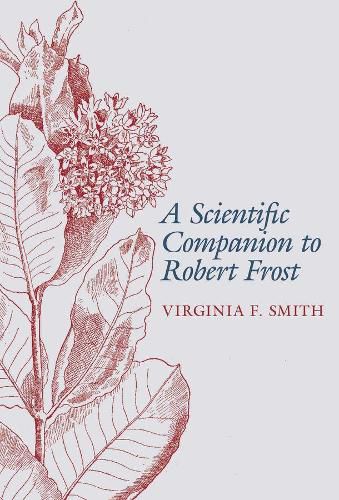Readings Newsletter
Become a Readings Member to make your shopping experience even easier.
Sign in or sign up for free!
You’re not far away from qualifying for FREE standard shipping within Australia
You’ve qualified for FREE standard shipping within Australia
The cart is loading…






Mention Robert Frost and people instantly think of snowy woods and less-traveled paths and rural neighbors meeting to fix their stone fence.
But what does Robert Frost have to do with science? You might be surprised. Born in 1874, Frost lived through a remarkable period of scientific progress, including the development of quantum mechanics and the theory of relativity, the Big Bang theory, the discovery of the structure of DNA and the beginnings of space travel. Possessing a powerful intellect driven by keen curiosity, Frost was highly knowledgeable about the science of his time and infuses his poetry with imagery and language borrowed from science.
Frost not only uses the language of science to enrich his poetry in the same way he uses classical, historical, biblical and literary allusions, but he also uses ordinary language to create sophisticated metaphors based on scientific concepts such as evolution and entropy. A Scientific Companion to Robert Frost represents the first systematic attempt to catalogue and explain all of the references to science and natural history in Frost’s poetry. The book, which is organized chronologically, uses language that is accessible to laymen and is supplemented by numerous illustrations, and appendices that should make it a valuable resource for teachers and scholars.
$9.00 standard shipping within Australia
FREE standard shipping within Australia for orders over $100.00
Express & International shipping calculated at checkout
Mention Robert Frost and people instantly think of snowy woods and less-traveled paths and rural neighbors meeting to fix their stone fence.
But what does Robert Frost have to do with science? You might be surprised. Born in 1874, Frost lived through a remarkable period of scientific progress, including the development of quantum mechanics and the theory of relativity, the Big Bang theory, the discovery of the structure of DNA and the beginnings of space travel. Possessing a powerful intellect driven by keen curiosity, Frost was highly knowledgeable about the science of his time and infuses his poetry with imagery and language borrowed from science.
Frost not only uses the language of science to enrich his poetry in the same way he uses classical, historical, biblical and literary allusions, but he also uses ordinary language to create sophisticated metaphors based on scientific concepts such as evolution and entropy. A Scientific Companion to Robert Frost represents the first systematic attempt to catalogue and explain all of the references to science and natural history in Frost’s poetry. The book, which is organized chronologically, uses language that is accessible to laymen and is supplemented by numerous illustrations, and appendices that should make it a valuable resource for teachers and scholars.